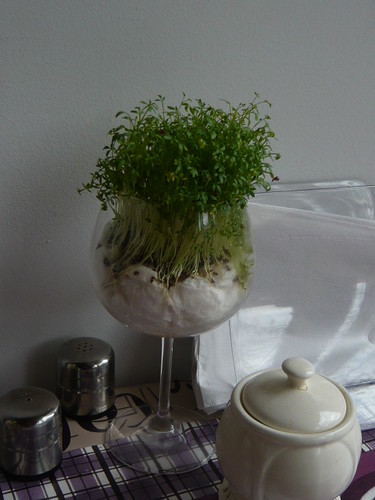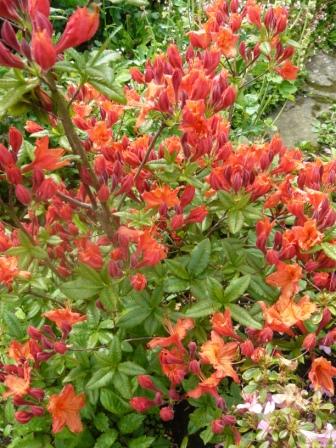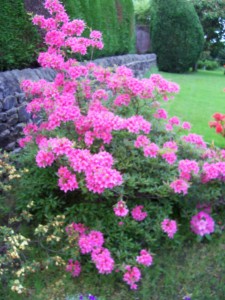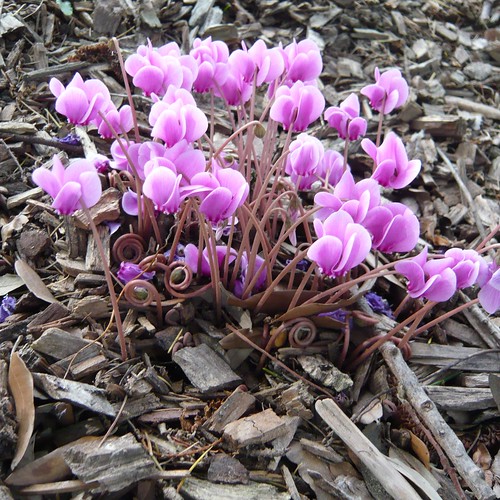New Places for Growing Cress
Egg and Cress sandwiches from your own home grown cress – marvelous and so easy.
I liked the Cress growing in this large wine glass at a local cafe so I thought I would grow some as I did as a child.
- Fill your glass with an absorbent paper towel or blotting paper.
- Dampen the paper and if necessary add more paper so the Cress will grow above the rim of the glass. This is a bit low to get at the sprouted cress.
- Sow seeds evenly onto the damp paper.
- To get good germination, make sure the freshly sown seed is kept in the dark.
- These will take from ten to fourteen days to mature.
- Mustard grows 3 days quicker than cress so if growing both sow Mustard later.
- As there is no drainage do not flood with water keep just damp.
- Harvest whilst still young and crisp.
Proper cress as in “Mustard and Cress” is Lepidium sativum and the Mustard is Brassica hirta. Beware many supermarkets sell oilseed rape seedlings (Brassica napus) as Cress with little or no flavour.
Beware if you grow on soil the seed husks drag up the soil as the plant grows and can create a gritty feel to your harvest. I like the scent of growing Cress but it may not be to everyones taste.
Other places or receptacles for growing your crop of Cress could include a smart plant pot, broken or chipped china but not grannies best antiques. I put a pot on top of the TV and the water leaked and broke it!
Cress seeds and other ‘sprouters’ from Thompson Morgan



